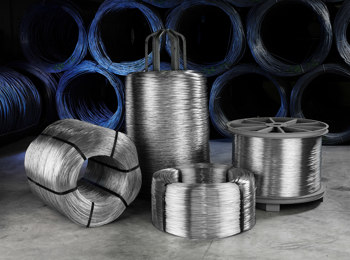8 月 . 06, 2024 06:52 Back to list
Explore Affordable Gabion Towers for Enhanced Landscape Design and Erosion Control Options
The Rise of Gabion Towers A Sustainable Solution in Construction
In recent years, the construction industry has seen a significant shift towards sustainable building practices. Among the plethora of innovative solutions, gabion towers have emerged as a popular choice, particularly appealing to environmentally conscious builders and developers. Gabion towers, constructed from mesh wire cages filled with rocks, stones, or other materials, serve multiple purposes in both urban and rural settings.
What Are Gabion Towers?
Gabion towers are vertical structures made from a series of interconnected gabion baskets. These baskets are typically filled with locally sourced stones or recycled materials, making them not only cost-effective but also low-impact on the environment. The design of gabion towers allows for versatility in their application, whether they are used for noise reduction, retaining walls, or even as decorative landscaping features.
Advantages of Using Gabion Towers
1. Environmental Benefits One of the most compelling reasons to choose gabion towers is their minimal environmental impact. The materials used for filling the gabions can often be sourced locally, reducing transportation emissions and costs. Furthermore, natural materials allow for the creation of structures that blend seamlessly with their surroundings.
2. Stormwater Management Gabion towers can help manage stormwater runoff, reducing erosion and the risk of flooding. The porous nature of gabions allows water to flow through, mitigating the impact of heavy rains. This characteristic provides additional ecological benefits, as it can promote groundwater recharge and support local flora and fauna.
buy gabion tower

3. Aesthetic Versatility With the ability to use a variety of fill materials, gabion towers can be customized to fit different aesthetic requirements. Whether it’s smooth river stones, rough boulders, or recycled concrete, the visual appeal of gabion towers can enhance the surrounding landscape. This flexibility has led to their increased use in urban planning and landscape architecture.
4. Structural Integrity Gabion towers are renowned for their stability and strength. They can withstand harsh weather conditions, making them suitable for regions prone to flooding, landslides, or erosion. The weight of the stones used in the baskets helps anchor the structure, providing a reliable solution in challenging environments.
5. Cost-Effectiveness Building with gabion towers can be more economical than traditional building methods. The materials are often cheaper, and the labor required for assembly is less intensive. Moreover, the longevity and durability of gabion structures can lead to lower maintenance costs over time.
Applications of Gabion Towers
Gabion towers have a variety of applications. They can function as retaining walls to stabilize slopes, as privacy screens in urban settings, or as artistic installations in public spaces. Additionally, their use in green building projects emphasizes a commitment to sustainability, often serving as a focal point for eco-friendly initiatives.
Conclusion
As the movement towards sustainable construction continues to gain momentum, gabion towers represent a promising solution that balances functionality with environmental consciousness. Their myriad benefits—ranging from aesthetic appeal to ecological sustainability—make them an attractive option for developers and architects alike. In a world increasingly focused on reducing our carbon footprint and finding innovative materials for construction, gabion towers stand out as a practical, sustainable, and visually appealing choice. By embracing such solutions, we can contribute to a more sustainable future while meeting the needs of modern infrastructure. For those looking to invest in the future of construction, exploring options like gabion towers may just be the pathway to success.
-
Wire Mesh Thickness Impact on Gabion Wall Load Bearing
NewsAug.12,2025
-
Ultimate Guide to Hexagonal Gabion Box
NewsAug.12,2025
-
Types of Rocks for Gabion Baskets Durability and Aesthetics
NewsAug.12,2025
-
Standard Gabion Box Sizes and Their Industrial Applications
NewsAug.12,2025
-
Easy Guide to Building Garden Gabion Cages at Home
NewsAug.12,2025
-
Drainage Solutions for Gabion Mesh Structures
NewsAug.12,2025
-
Visualizing Gabion 3D Integration in Urban Landscapes with Rendering
NewsJul.23,2025






